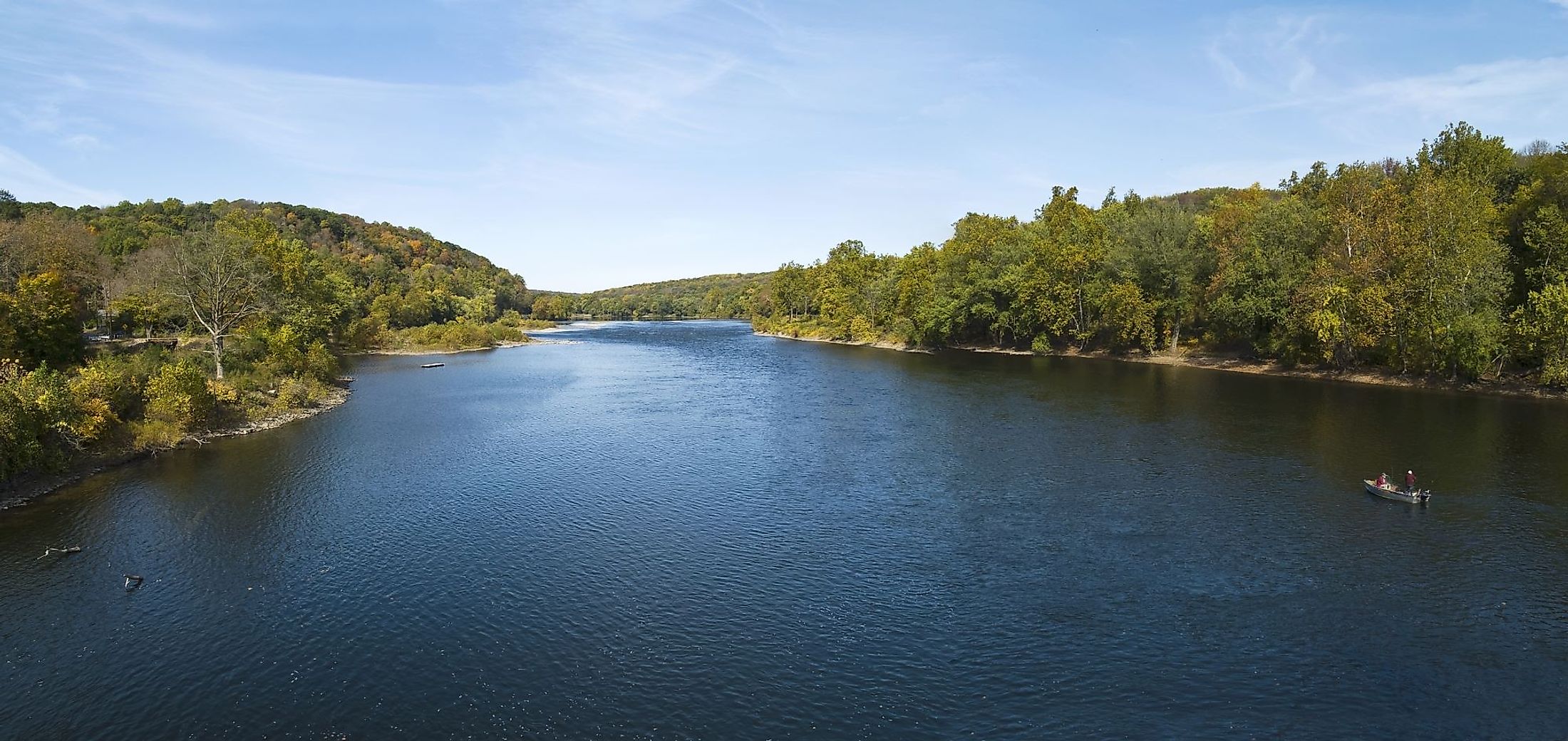
Delaware River
The Delaware River is a major river in United States that originates in New York’s Catskill Mountains and flows for 674 km before reaching the Atlantic Ocean close to Delaware’s Cape Henlopen and New Jersey’s Cape May. The river actually rises in two branches and drains an area of 35,070 sq.km, in the four US States: Delaware, New York, Pennsylvania and New Jersey. The tide-water meets the waters of the Delaware River close to the meeting point of the borough of Morrisville in Pennsylvania and the capital city of Trenton in New Jersey. The waters of the river drain into the Atlantic Ocean at Delaware Bay and excluding the Bay, the length of the river with its two branches is about 624 kilometers. Remarkably, the Delaware River is recognized by America’s Great Waters Coalition as one of the nineteen “Great Waters”.
Course Of The Delaware River
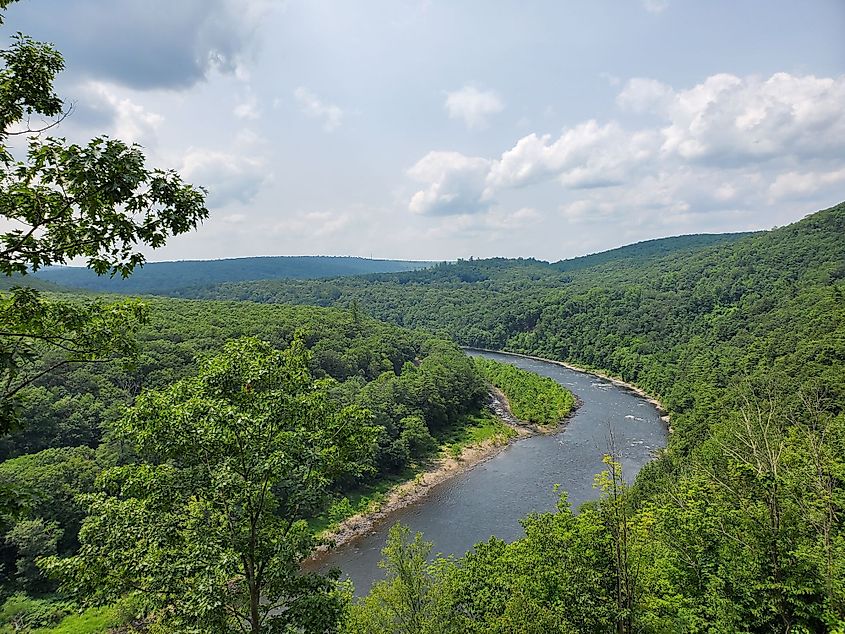
Also referred to as the Mohawk Branch, the 140km long West Branch of the Delaware River rises at an elevation of 575m close to Mount Jefferson. The river then flows in a deep trough through the plateau in the southwest direction and enters the Delaware County passing through the towns of Delhi and Stamford. In the southwestern part of Delaware County, the river flows in the southwest direction in a winding course through the Catskill Mountains. An important aspect of this West Branch of the Delaware River is that it forms the Cannonsville Reservoir which began serving New York City in 1964. After flowing over halfway through the reservoir, the river water then flows through a 71km long tunnel in the town of Tompkins and reaches the 137km Delaware Aqueduct. In Deposit town, the West Branch flows parallel to the New York State Route 17.
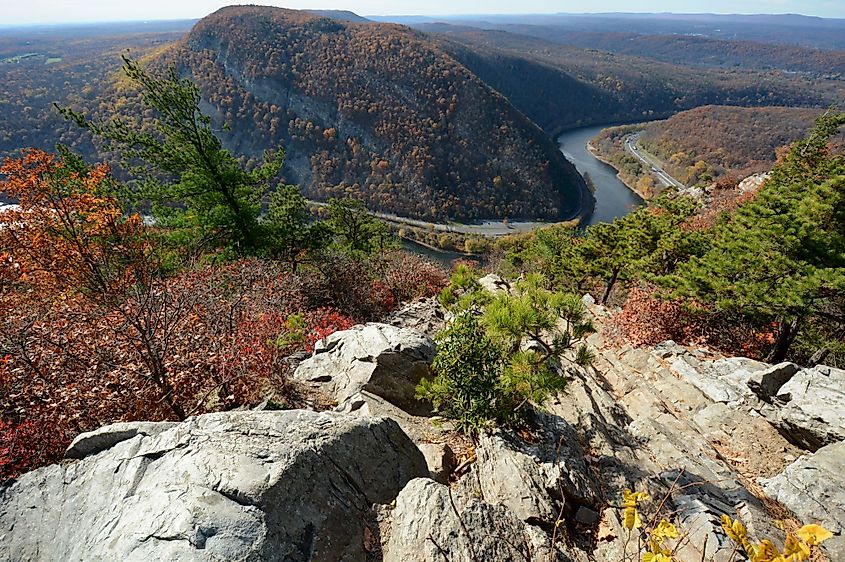
The 121km long East Branch of the Delaware River rises from a small pond in the southern part of the Grand Gorge hamlet in the Roxbury town. The river then flows in the southwest direction and creates the Pepacton Reservoir which is the largest reservoir that supplies the New York City. In the southern part of the village of Hancock, the East Branch joins with the West Branch to form the main Delaware River. The Delaware River then flows between the northern part of Pennsylvania’s Poconos Mountains to the lower shale beds in the northern part of the Catskills Mountains. The Delaware River flows in the southeast direction and reaches the Shawangunk Mountains and the city of Port Jervis. From Port Jervis, the river is deflected into the Minisink Valley, where it flows in a bed of glacial till. The river then flows between Philadelphia and New Jersey until it becomes a broad inlet of sea, entering the Delaware Bay. Some of the major tributaries of the Delaware River include Pequest River, Musconetcong River, Christina River, Lehigh River, etc.
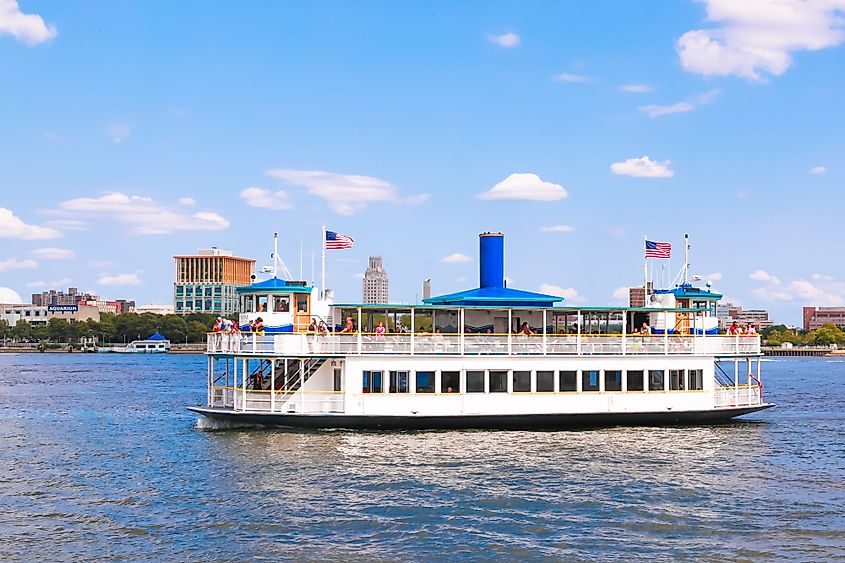
The tidal section of the river is navigable and serves as a vital route for shipping and transportation, boosting the economic and industrial development of the cities of Trenton, Camden and Philadelphia. Given its rich history, cultural and economic significance, the Delaware River is deemed a Wild and Scenic River under the Wild and Scenic Rivers Act of 1968, which aims to preserve rivers like the Delaware River. It is one of the few remaining free-flowing rivers in the United States, having no dams or impediments on the river’s main branch. However, the river is heavily used since its watershed provides drinking water to approximately 17 million people, which is equivalent to 6% of the entire population of the United States.
Etymology
The Delaware River had several older names before acquiring its latest name. The first inhabitants of the basins of the Susquehanna River and Delaware River during European colonization were called the Lenape Native Americans. This tribe named the river Lenapewihittuk or Lenape River. The Native American name meant that the Delaware is the largest river in that part of the country. Later on, during the Dutch and Swedish settlements along the lower section of the river, the river was called South River, relative to the Hudson River which was the North River back then. After the Dutch were expelled by the English in 1664, the river was renamed to Delaware after Sir Thomas West, third Baron De La Warr, who defended the colony during the First Anglo-Powhatan War and also served as the first Royal Governor of the Colony of Virginia.
Brief History
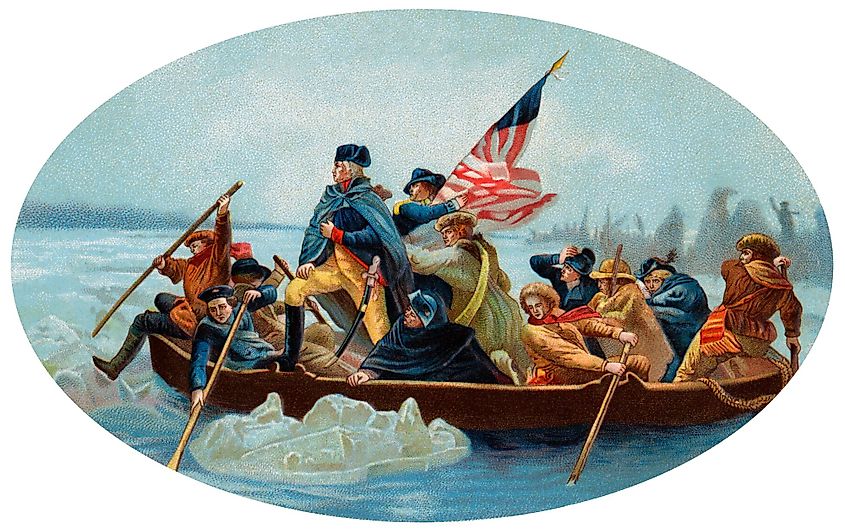
The Delaware River was a strategic point for several campaigns during the American Revolutionary War. One of the most prominent events was George Washington crossing the Delaware River with the Continental Army on the night of December 25-26, 1776. This crossing eventually led to a successful attack and victory against the Hessian Troops that were then occupying Trenton of New Jersey. Moreover, the shores of Delaware witnessed the Battle of the Red Bank and the Siege of Fort Mifflin that were conducted by the American and British navies.
Economic Significance Of The Delaware River
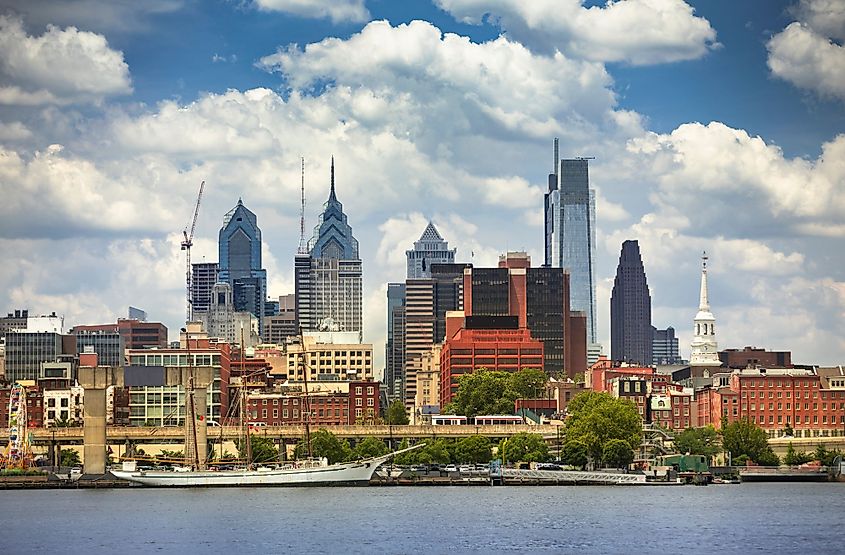
In addition to providing drinking water to more than 17 million people, the Delaware River has significantly contributed to the economy from recreation, hunting and fishing, ecotourism agriculture and port benefits. For example, the Delaware River port complex is one of the largest shipping areas of the United States, supporting 135,000 direct or indirect jobs. The port is the largest importer of cocoa beans, fruit and approximately 70 percent of the oil shipped to the Atlantic Coast passed through the Delaware estuary.
Biodiversity In The Delaware River Basin
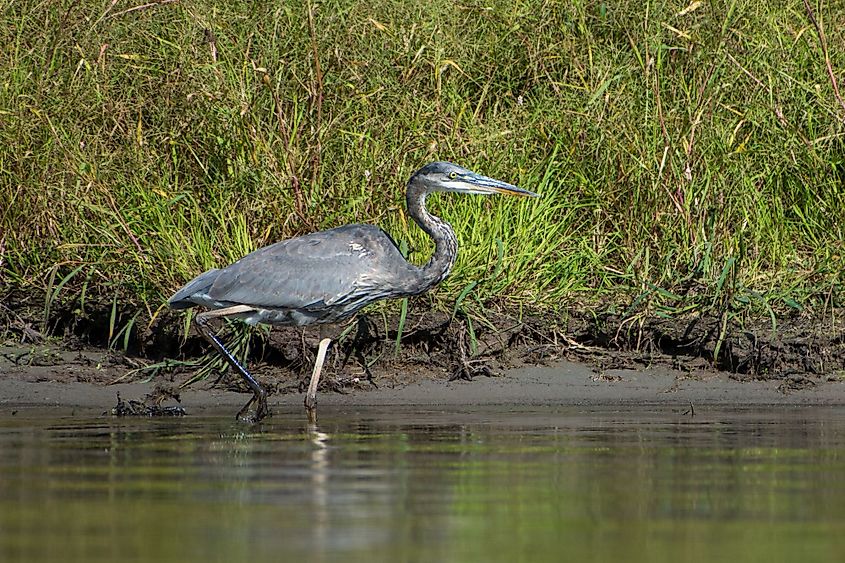
The clean waters of the upper Delaware regions support more than 90 fish species, making the river a fishing hotspot. Fishes include the Eastern Brook trout, striped bass and the migrating river herring. Some of the notable animals that are found in the river basin include beavers, white-tailed deer, otters, muskrat, mink, etc. More than 250 travelling birds also depend on the Delaware River basin for resources. Most importantly, the Delaware houses the endangered American Eels, which can thrive in Delaware because it is the longest undammed freshwater river east of the Mississippi. Unfortunately, the impacts of development and industrial activity still pose a threat to the river system despite some successful conservation efforts along the river.











